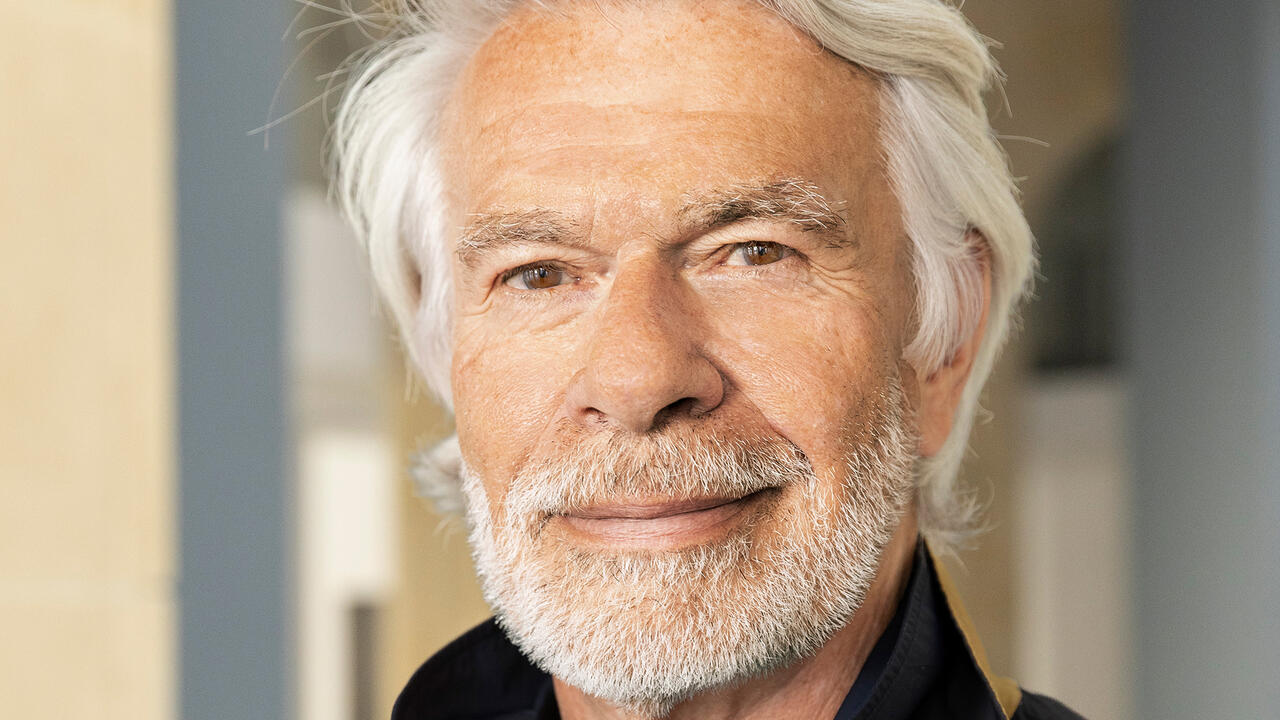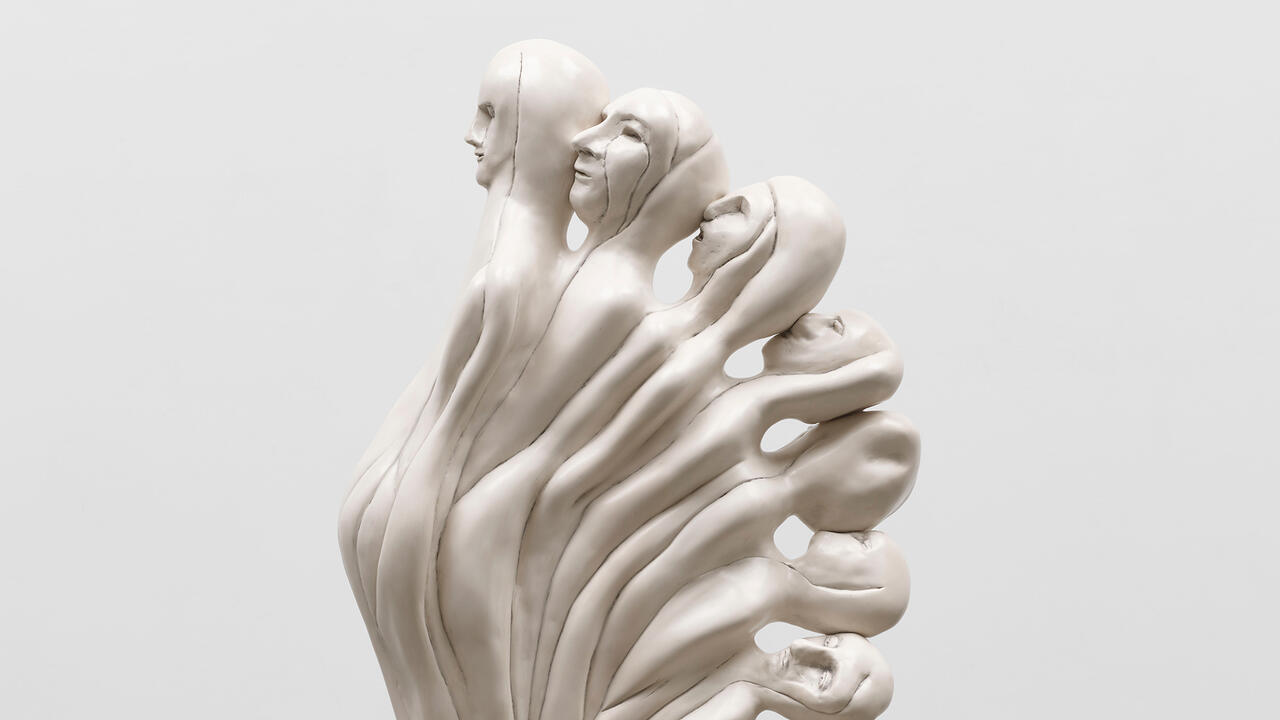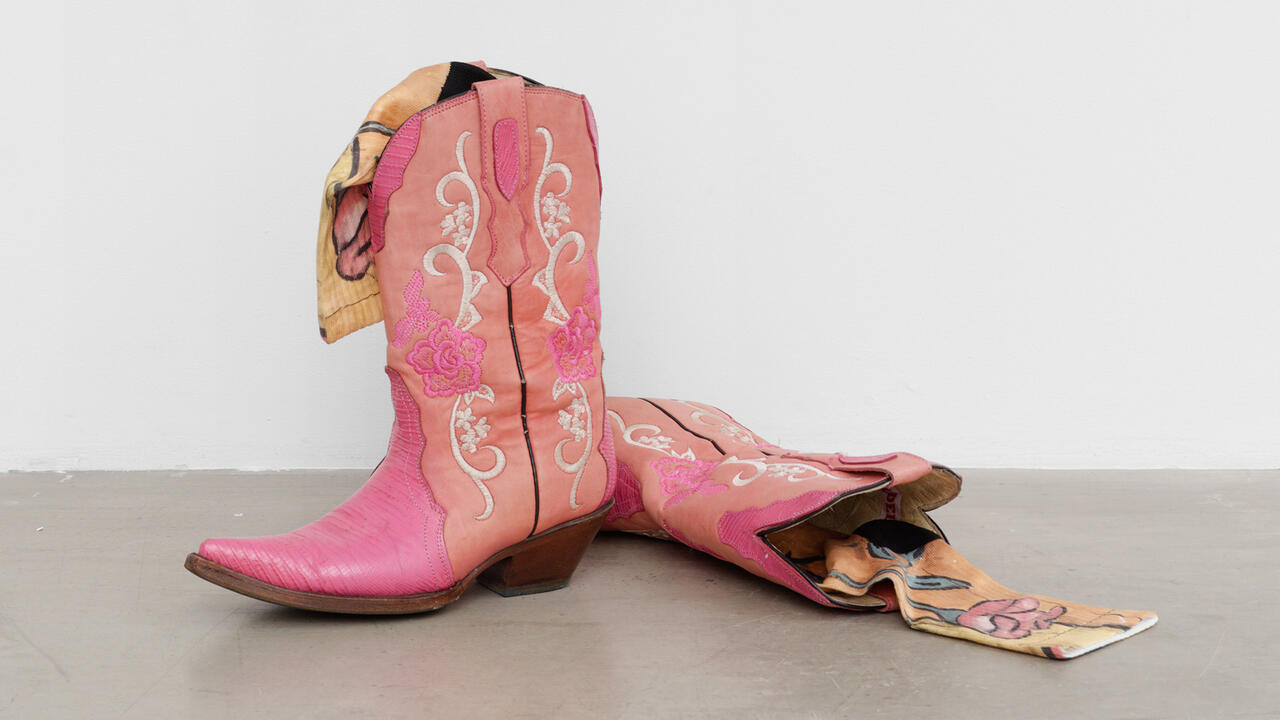The Odyssey of S. H. Raza
On the occasion of a major survey at Centre Pompidou, Paris, Homi K. Bhabha speaks about the distinctive philosophy of cultural cosmopolitanism found in the artist’s paintings
On the occasion of a major survey at Centre Pompidou, Paris, Homi K. Bhabha speaks about the distinctive philosophy of cultural cosmopolitanism found in the artist’s paintings

Born in Kaikaya (present-day Madya Pradesh) and educated in Nagpur, Bombay (present-day Mumbai) and Paris, S. H. Raza (1922–2016) was a founding member of the Progressive Artists Group, a group of modern artists that synthesized Indian artistic practices with Euro-American movements of the early-to-mid 20th century. On the occasion of a survey of nearly 100 of Raza’s works at Centre Pompidou, Paris – his first in France, where he lived for more than half a century – frieze assistant editor Lisa Yin Zhang spoke to Homi K. Bhabha, a leading postcolonial scholar.
In lieu of an interview, Bhabha wanted to have a conversation: ‘Let’s not make it like I’m the authority,’ he told me. ‘We’ll just talk.’ This collaborative way of working is characteristic of his approach to Raza: he slides often between the ‘I’ of himself, the ‘I’ of Raza, the ‘I’ of the Indian motherland and finally, an almost mystical ‘you’ that encompasses diaspora itself. We discuss Raza’s signature bindu, his relationship with the poetry of Ashok Vajpeyi, his project of cultural translation and his expansive ideas of land and belonging. Like Odysseus, Raza had to leave his motherland in order to return.

Lisa Yin Zhang Let’s start at the beginning: the bindu. In Sanskrit, the word means ‘point’ or ‘dot’. In Hindu metaphysics, it’s the origin of all creation. In 1980, following travels in India including trips to the Ajanta and Ellora caves in Maharashta, Raza adopted the bindu in his work.

Homi K. Bhabha In the centre of a number of Raza’s works, there’s a big, dark square: the bindu. And of course, a bindu has to be seen as something continually shifting and changing and therefore creating new figurative, artistic forms: it is only from a point that you can develop a larger circumference.
What is so beautiful is that in a work like Maa (1981), for example, the frame around the bindu is not continuous, not restrictive: there’s always a space between them. Then, at the bottom right corner, there is a leakage. It’s as if the bindu is oozing: it will not be contained. But even there – see, there are different shards of colour that bring your line of sight and attention back to the bindu, even as it moves and circulates in turn.

LYZ The bindu has both this centripetal force, like a gravitational vortex pulling everything toward it, and at the same time a centrifugal one, too. It’s exploding outward, warping everything in the painting around it. In some passages of Maa, Raza verges on figuration. Elsewhere, it’s legible as an abstract work, and still elsewhere, a landscape, all oriented around that central force.
HKB What I think is interesting about Raza’s painting is its layers: both the layering of paint and the layering of the composition. You will see that in many of Raza’s works, he paints figures, geometries, symbols and astral signs over these landscaped stratifications in the background.
Raza was born in Kaikaya, in these villages which were nomadic. He associates the notion of land, earth or territory – specifically, ‘La Terre’, as he named one of his paintings in the show (1977) – with the forest communities with whom he lived. It’s what the French call terroir when they talk about wine: the specificity of where your feet touch the earth, where the foundation of your being, your living, is; whether in the south of France, in Paris, in Bombay or Kaikaya. This notion of land is that to which you belong: the earth of India, la terre of India, is not the enclosed land of the territorial, sovereign Indian nation. Raza believed that you can have foundations in many tracts of la terre: you’re not grounded, you’re not fenced in. The flavours of the land across these places are different, but land is a symbol of difference and diversity.
That is why, in Maa, the bindu has this supplemental force. It moves out of any notion of the closed frame, and joins the stream of different colours, of different dimensions, of different horizontalities, of the different layers that you have in the painting itself.

LYZ In Maa, Raza reproduces a line from a poem by Ashok Vajpeyi: ‘Mother / what will I bring you / when I come home?’
HKB In the poem, Vajpeyi lists a number of things that he would bring back, that he could bring back, that he can’t bring back. Both the line and the painting can been read metaphorically, as if referring to Mother India. But Raza spent decades living in Paris and was deeply influenced by European art, particularly French art – Charles Rouelle and Bernard Buffet in particular. So it’s as if he’s saying: ‘I’ve been in a kind of exile, I’ve chosen to live away, yet I have a deep aesthetic, cultural and spiritual link with my own country.’
The beauty of this painting lies in the collaboration between Vajpeyi and Raza. Maa reverses the ekphrastic gaze. Usually, the ekphrastic relationship goes the other way: a work of art is described in a work of literature. Raza’s citation of Vajpeyi suggests that there are many ways of living in the world, many affiliations. ‘Mother, when I come back’ – the decision is mine. It’s not as if I have to rush back in a spirit of patriotism, as if I feel guilty for not being there. I can be Indian and I can be cosmopolitan at the same time; I can be French.
It’s a very different viewpoint from the current situation in many countries, where citizens or nationals who live abroad, who work abroad, are seen as having renounced their responsibility to their countries of origin. That is not true, and it becomes less and less true, with large diasporic and migrant populations who settle across the world. I’m sitting here in Boston. I might not be immediately surrounded by the symbols of Indian culture or the voices of Indian languages, but if I take a 15-minute drive to Shrewsbury, there are plenty of Indian restaurants, Indian shops: people living their lives as they understand it, their lives according to certain Indian traditions, in a foreign country. Maa argues that one can belong in different cultures, so long as your relationship to them is deep: you can bring them together, you create a convergence in the work.

LYZ I love this idea of reverse ekphrasis, because it points to the larger philosophical project you uncover in his work: reversing the flow of cultural transmission.
HKB Translation. I think there’s a difference between cultural transmission and translation. Transmission is uninterrupted citation, the uninterrupted presence of one tradition within another. Maybe changed, but uninterrupted. Cultural translation is more difficult, because it recognizes that there cannot simply be a seamless connection between cultures and languages. Even if the sign is the same, the language in which they are signified has a whole different set of cultural intentions.
So, if I take this Finnish teacup here, and place it in England at four o’clock, it would be enclosed within the very different notion of British tea. If we were in Japan, we would have a tea ceremony. Today, I am drinking coffee out of this teacup.
So you see, cultural translation is a form of thinking about translatability, but also its limits: the way in which each language – whether it’s visual, written or inscriptive; whether national or cultural – has its own context, its own forms of intention.

LYZ In that sense, I don’t think that pure cultural transmission exists in any form. We’ve talked about Raza reversing the flow of ekphrasis, but I’m thinking now whether the larger project of his painting is more multidirectional than even just a two-way exchange. I love this idea of him embedding in Maa, ‘Mother, what shall I bring you?’ As if to say: I have something to offer you. Inflected by your influence, and its interchange with a different land, I’ve come back changed and I have the stake to change you in turn.
HKB Yes. And at the moment, in the kind of ethnical, nationalist cultures in which we live, it’s not, ‘Mother, what shall I bring you?’ It’s the mother saying, or the motherland saying, ‘Why did you leave?’ or, ‘You betrayed your patriotism, you betrayed your citizenship.’ But here, with a great aesthetic tenderness, he understands that, in a way, going away is learning how to come back. But you can’t come back to the same place.

LYZ I’ve got to work on my own personal canon, because the first thing I think of is Odysseus: he has to leave in order to truly come home. And when he comes home, it’s not the same home. He’s changed, and so has the Ithaca he’s left.
HKB Exactly. There is a stanza where Penelope keeps saying, but who are you? You look like this poor, destitute person, but your manners, your bearing, are remarkable. So you’re a paradox to me. And he says, I’ll tell you this much: before coming to you, I was living in a place where people spoke many different languages. He doesn’t give her a whole itinerary of his journey. But I think what is important is the underlying thought, as I read it, in The Odyssey, and as I think I read it in Raza: that when you come from a place where you hear many languages, it's not only a linguistic problem, it’s a larger cultural problem. Because, as I demonstrated with the notion of the teacup, you can find the same word in many languages for the same thing, but in different systems, these objects have their own significance about culture, about relationships, about time. And in that respect, Raza spoke up for cultural translation – he spoke up for a kind of enlightened equitable notion of cultural cosmopolitanism.
‘S. H. Raza’ is on view at Centre Pompidou, Paris, until 15 May.
Main image: S. H. Raza, Black Sun, oil on canvas. Courtesy: Adagp, Paris and The Raza Foundation





















